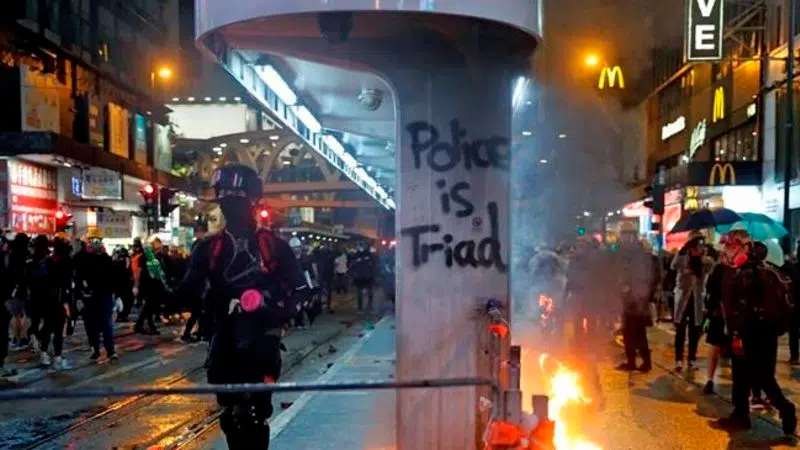
Hong Kong police storm subway with batons as protests rage
HONG KONG — Protesters in Hong Kong threw gasoline bombs at government headquarters and set fires in the streets, while police stormed a subway car and hit passengers with batons and pepper spray in scenes that seem certain to inflame tensions further in a city riven by nearly three months of pro-democracy demonstrations.
Police had denied permission for a march Saturday to mark the fifth anniversary of a decision by China against fully democratic elections in Hong Kong, but protesters took to the streets anyway, as they have all summer. They provoked and obstructed police repeatedly but generally retreated once riot officers moved in, avoiding some of the direct clashes that characterized earlier protests.
Late at night, though, video from Hong Kong broadcaster TVB showed police on the platform of Prince Edward subway station swinging batons at passengers who backed into one end of a train car behind umbrellas. The video also shows pepper spray being shot through an open door at a group seated on the floor while one man holds up his hands.
It wasn’t clear whether all the passengers were protesters. Police said they entered the station to make arrests after protesters assaulted others and damaged property inside. The TVB video was widely shared on social media as another example of police brutality during the protests. Angry crowds gathered outside Prince Edward and nearby Mong Kok station, where police said they made arrests after protesters vandalized the customer service centre and damaged ticket machines.


